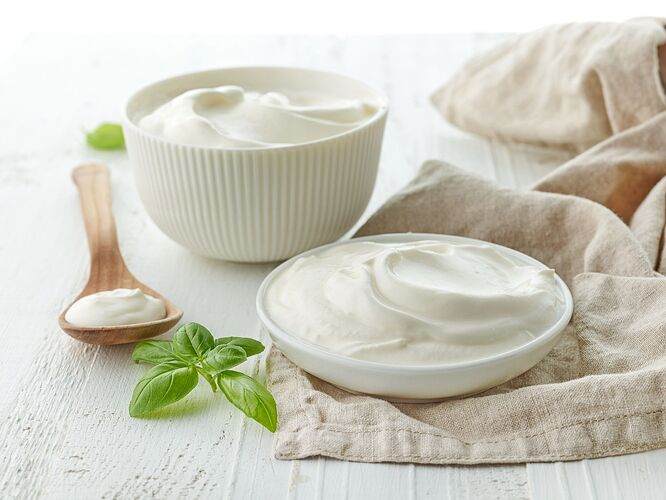Sour Cream has its origins in Eastern Europe, where it is called Smetana. It’s a staple in all Slavic meals. Although popular across Eastern Europe, it wasn’t discovered in the Western part of Europe until the early 18th century.
Smetana was originally made by allowing natural milk to ferment for a few days in a warm room or oven. Natural farm milk has more cream than you buy in the store, making great Smetana. Traditionally people separated the milk and cream, then let the cream ferment to make Smetana.
Lacto-fermentation turns the top layer into thickened Smetana or Soured Cream. You would then ‘smetat’ (сметать) or scrap the top off, which led to the word Smetana. You could still use this method, but it is sometimes unpredictable and requires a lot of cream to be used.
Nowadays, Sour cream normally requires adding a culture to the cream, allowing it to ferment. You also use a natural probiotic-rich Yogurt to make sour cream since it contains lactic bacteria. You can also use some homemade cultured Sour Cream from a previous batch to start a new batch.
So how to make authentic cultured sour cream full of probiotics?
Ingredients:
- Starter or ready yogurt made with probiotics.
- Heavy(double) cream 1L (with no preservatives and additives)
Equipment:
A yogurt maker (multi cooker) or similar would help, or just a thick towel (if you are patient enough)
Time to prepare 15 min
Time to incubate:
- Three to six hours if you use a yogurt-making device and ready probiotic-rich sour cream(or yogurt) as a starter
- Twelve to twenty hours if you do not use any yogurt-making device
- Twelve to Forty-eight hours if you use starter culture and yogurt-making device.
Instructions:
Pour 1L of heavy(double) cream into the sous pan and slightly warm. Then add the starter (ready and cultured sour cream or yogurt with probiotics or dry starter). Stir well and then allow 15 min in which time the starter will be able to adapt. Then transfer to Jars and then:
If you use yogurt making device – incubate for 3 to 6 hours; if you use ready yogurt or cultured sour cream as a starter. Or 12 to 24 hours if you use a dry starter for sour cream or yogurt(why not kefir)
Wrap the jars with a thick towel and place them in a hot spot for 24 to 48 hours.
Check occasionally but carefully the texture and flavour with no shaking and stirring, and when ready, refrigerate for a few hours before consumption.
Easy sour cream, or as some call it, a fake sour cream, resembles the taste and texture, but it does not contain any probiotics.
Some brands of sour cream we buy in stores aren’t really sour cream, but just artificially thickened with thickeners milk products.
Many sour cream recipes aren’t sour cream at all in the traditional sense, but they resemble authentic sour cream in taste and texture very much and do not contain probiotics.
Equipment:
- Large bowl
Ingredients:
- Heavy (double) cream 1L
- Lemon juice or vinegar. Be careful when using vinegar, as it can add a strong flavor. – 3-5 tablespoons or 1 tablespoon per cup heavy(double) cream
Instructions:
Mix the heavy cream and lemon juice (or vinegar) in a clean large bowl and stir with a clean spoon. Cover the jar loosely with a paper towel or coffee filter to allow for airflow while protecting the cream as it sits out. After about 24 hours, the cream will have thickened slightly. Give the cream a stir and move it to the refrigerator for a few hours before consumption.
Lastly, how to differentiate the creme Fraiche and Sour Cream. Normally the sour cream is tarter in taste, so a bit more sour, compared to the crème Fraiche which is a bit milder. If you decide to make a crème Fraiche instead, reduce the incubation times to make it less sour.
However, the method of making is the same, so just the taste is different. You can start making creme Fraiche, which turns into sour cream(because it is sourer than expected), or you can make a mild sour cream, also called a crème Fraiche.
